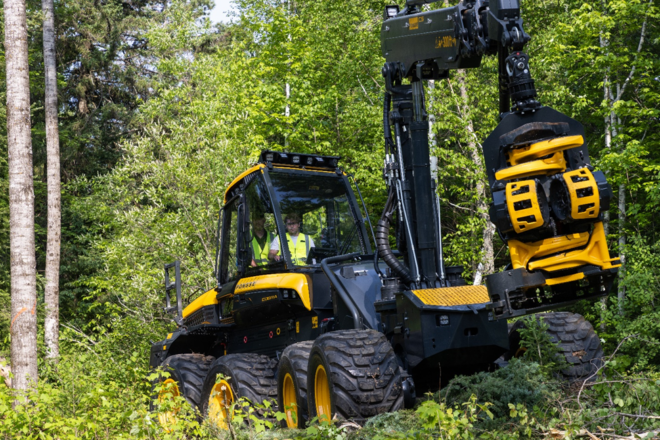SURGING FUEL PRICES! Who is it hurting? Why is it hurting? Where is it going?

I was honored when Clay Altizer and FRA asked me to weigh in on the surging fuel prices and the impacts on logging and forest products transportation sectors. Why? Well, it is not because I feel that we are the experts. I readily admit that prior to taking this position with the Southern Loggers Cooperative (SLC) in 2012, I did not know much about the “fuel” business other than the fact that I had purchased many thousands of dollars worth of fuel in my 23-year career in logging, forest products trucking and chip milling leading up to that point. However, during the last ten years, I have learned much about the business side of the fuel industry. That still does not make me an expert. However, with the SLC’s 32 fueling locations across seven states, just a little under 4,700 members, and approximate 55 million gallons of fuel pumped or dropped into member’s bulk tanks predicted for this year, I certainly believe that we have a good feel for what the fuel business is doing, or at minimum, we have a good feel for how prices move. We literally track it daily, and our fuel brokers track it hourly.
As a point of reference, let’s look back in time for just a moment. In April of 2018, I was honored to speak at the FRA’s Annual Meeting in New Orleans. On the day I gave my presentation at that meeting, SLC’s average fuel prices for On-Road and Off-Road fuel were $2.70/gallon and $2.22/gallon, respectively. Just a couple of days before the 2020 Presidential Election (a very significant date in time), the SLC average fuel prices for On-Road and Off-Road fuel were $1.79/gallon and $1.44/gallon. Fast forward to the day that I researched our past pricing for this article (3/14/22), and the SLC average prices for On-Road and Off-Road fuel were $4.72/gallon and $4.11/gallon, respectively. In just a short 16-month period, the SLC average fuel prices increased by $2.93/gallon for On-Road (164% increase) and $2.67/gallon for Off-Road (185% increase).

So, with that being said, let’s jump into the three questions in the title of this article.
Who is hurting from the surging fuel prices?
Obviously, the answer to that question is EVERYONE. That certainly works its way right down to the consumer, regardless of whether they are buying lumber, paper, or a box of cereal at the grocery store. However, for the purpose of this article, it is the logger and those that transport forest products. They are the ones that we have first-hand knowledge of how much it is hurting. At least 90% of our SLC members are loggers and/or forest products truckers. Why is that important? In a recent Woods to Mill article by FRA’s Northeast Region Coordinator Eric Kingsley, he said,
“As is obvious to anyone in the forest industry, loggers and truckers are the supply chain links that connect the woods to the mill. In FRA’s supply chain schematic, there are a lot of arrows connecting lots of products, but for anything to get from the woods to the consumer, the industry relies on loggers and truckers. If loggers aren’t healthy, it’s hard for any other sector to be healthy for very long.”
Why is it hurting?
Aside from the changes over time that I mentioned above, the upward movement that we have witnessed since 1/1/22 has been at a rate that added efficiencies and fuel adjustments (if actually received) can’t keep up with. Over the past two weeks alone (2/27/22 – 3/12/22), SLC average prices have increased $1.23/gallon for On-Road and $1.09/gallon for Off-Road. Around 50 cents of that increase for our prices took place in 1 single day. According to a recent survey by the American Loggers Council, Scott Dane, Executive Director, indicates that just under 50% of those responding to the survey were showing an increase at or above 50% in their fuel costs in the first two months of the year. Keep in mind that this was before the invasion of Ukraine by Russia. Obviously, the rapid rise in fuel cost doesn’t stop with “just” the fuel. It increases every other item associated with operating their business. I encourage you to visit the American Loggers Council website and view the rest of the survey to see how all operating costs have changed since the first of the year.
Additionally, we see other issues in our business that only add to the topic at hand with the surging fuel prices. In a conversation with our Executive V.P. & COO Jason Slatten, he said:
“When fuel markets go haywire, one of the most common things we see at Southern Loggers stations is the “panic buy” or stockpiling. Because of the lag in our pump prices due to our pricing structure (our direct invoice cost plus a very small markup), we’ll see a few members start showing up with piggyback tanks, drums, buckets, and any other container they can get a drop of that cheap fuel in. Owners send every truck they have, their buddies, cousins, and in-laws to fill up. That reaction to a rising market may seem like a wise one but is actually quite detrimental. Those guys got that cheap fuel stockpiled, but our tank is now empty. The next guy to come in who needs 100 gallons today to run his job is left standing there with nothing and now must find fuel somewhere else, paying Lord only knows what. Naturally, this leads to additional unproductive time chasing fuel and fewer loads to the set and to the mill. On those days when the fuel market is higher than a giraffe’s butt, we’re now left with no option but to purchase whatever we can just to wet the tank. The rub is now members will have to pay for that high day, instead of SLC being able to “sit out” on buying fuel that day and ride our inventory until tomorrow when the market may not be crazy. That’s not always an option, as we have some stations that get a transport load (or two!) five days a week just to stay going. The big takeaway here is that you WILL NOT avoid fuel price increases in an economic and geopolitical climate like we currently have. “You may sidestep it for a few days, but not for long.”
Where is it going?
This is a question that is often posed to our primary fuel broker, Jamie Landers of F.M. Fuel and Resources. His answer is the same every single time,
“If I could tell you that, I would have an entirely different set of friends!”
While that is comical, it is very true. Yes, there are speculators that speculate, and predictions made by everyone. However, nobody really knows! Sometimes we all like to pretend that we do, but we do not! In the political climate that we live in, one move by a person or one word by another can change the whole course of how fuel prices are moving. I mentioned our COO Jason Slatten above. He and I have these conversations daily. We wholeheartedly agree that from what we’ve heard and read from folks in the fuel industry, we should expect elevated prices for the near future. While we have witnessed some sizable drops in the past five days (3/10 – 3/15), domestic inventory for crude and products is down, as is production. Demand has ramped up now that the country has opened back up and will likely increase even more once summer comes. Personally, I’m hoping that we/they are all wrong and domestic production goes full steam ahead tomorrow, and friendly foreign countries want to sell us some cheap crude to help us out in the meantime. The question is, in this political climate, will our government allow that to happen? We speculate but do not know that for sure!

I read a quote from a Minnesota trucker in an “As We See It” article by Scott Dane, stating, “The prices being paid to loggers and truckers are not keeping up to the increased cost of doing business.” In the past few days, we have started to see and hear that some consuming mills are providing some flat-rate increases and fuel adjustments. While those increases are certainly appreciated, is it enough? Has it been timely? Here at the Southern Loggers Cooperative, we truly hope to see consuming mills and other raw materials buyers adjusting rates closer to real-time. Our professional loggers and truckers need to be compensated for the increased costs they’re incurring, rather than a bump for what’s already past. A financially healthy raw materials supply chain can only be a good thing for the forest industry.
Things are tough! Doing business is tough! I would certainly rather write an article that is much more positive. However, I can always count on one of my board members and former Chairman of the board of the SLC Greg Williams to remind me of this…“It’s A Fine Day for Logging!”


